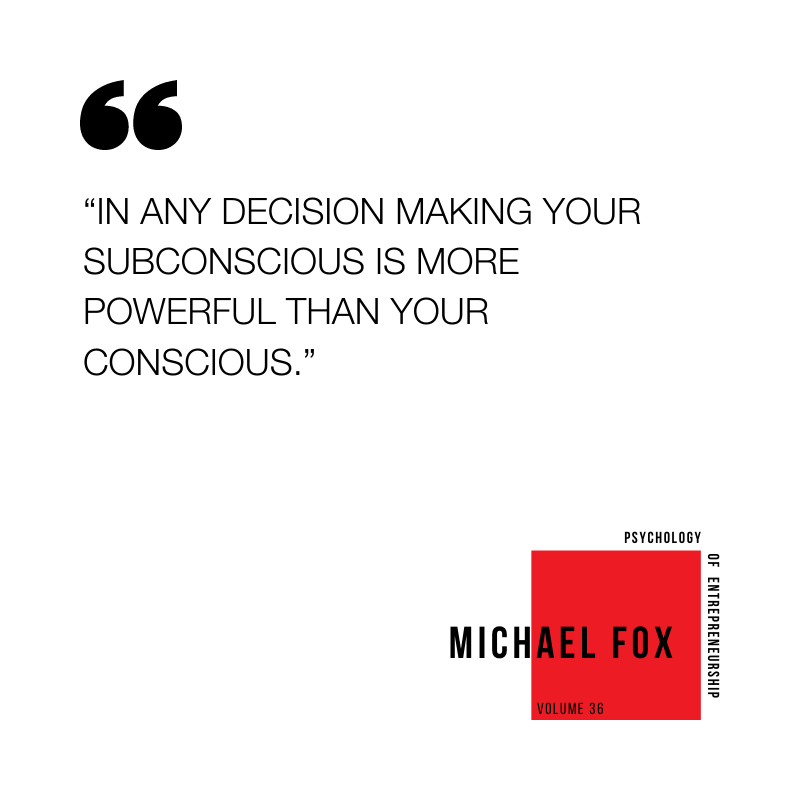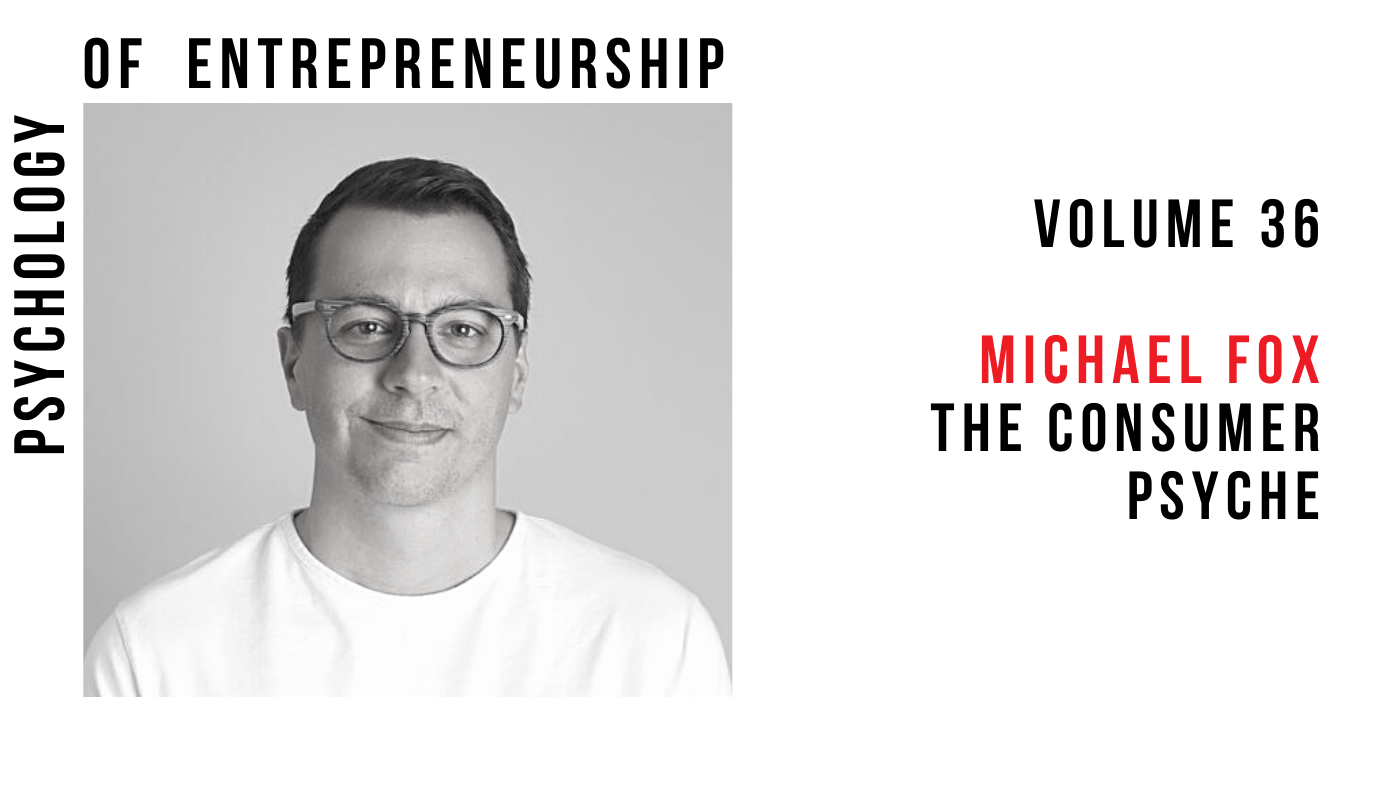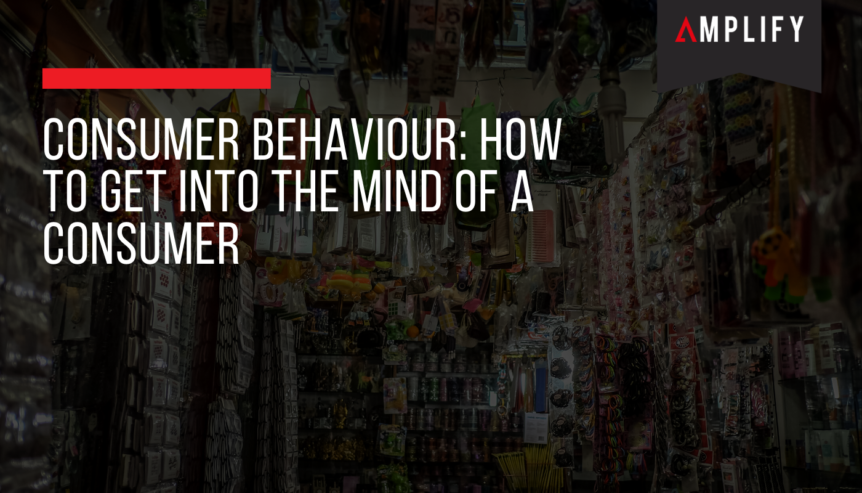Have you ever wondered why you went for one specific product, but left another sitting on the shelf?
What if you knew what inspired someone to choose one particular product over another? If you harnessed this kind of insight, analysed and used it just right, you could literally have the power to sell anything to anyone.
While it may seem like a sneaky move, creating a strong marketing strategy based on consumer behaviour is actually a staple in the business world.
In a recent volume of The Psychology of Entrepreneurship, I spoke with Michael Fox, the founder of Fable Food Co. Michael’s experiences as a serial entrepreneur has given him a unique insight into the weird and wonderful world of the consumer behaviour.
What Is Consumer Behaviour?
In a nutshell, consumer behaviour is the study of how consumers make decisions based on what they need, want, and desire. It also looks at how they buy, use, and dispose of goods.
Why It’s So Important
Well, if you want to maximise a product’s impact, then understanding consumer behaviour is paramount.
Consumer behaviour can give you some insight into the what’s and why’s behind a consumer’s buying decisions. By understanding how consumers decide on a product, marketers can then use that data to tweak their marketing strategies to meet consumer needs.
The Reality Behind Consumer Behaviour
There are multiple layers to the psyche of a consumer, and in most cases, irrationality rules supreme- which is probably why so many business owners can get it so wrong.
In 2009, Michael co-founded the world’s first custom women’s shoe company, Shoes of Prey. While this particular business was predicted to reach an eye-watering $100 million by 2018, it took a fall from grace due to a bad judgement call based on consumer feedback.
“So, with Shoes of Prey, we messed up our market research basically,” Michael said. “We had lots of mass-market customers coming to our website, and they were exploring designing their own shoes, but they just weren’t buying.”
Naturally, he wanted to know why.
So, Michael and the team carried out surveys, focus groups and interviews with customers, all in a bid to understand, “why aren’t you buying?”
Finally, they amassed the three customer demands; speed up the delivery times, don’t charge a premium for customisations and simplify the shoe design experience.
Like a doting genie in a lamp, their three wishes were granted. “We delivered the value proposition that the mass market customer told us she wanted and that we drew out through our market research.”
But was this the best business move to make?
The Power Of The Subconscious
Our subconscious has a sneaky stronghold on our decisions. So much so that we haven’t a clue how it affects how we feel about certain products until it’s too late.
After making the three major shifts within the business, Michael suddenly saw a significant change in the purchase numbers- and it wasn’t good.
“What we saw when we watched their behaviour was that this mass-market customer really didn’t want to customise,” he sighed. “She really just wanted to be told what to wear.”
“So, consciously, she thought she wanted to customise, but deep down subconsciously, she didn’t want to do it,” he explained. “In any decision making, your subconscious is more powerful than your conscious.”
The impact of this was so significant that on the 11th March 2019, Shoes of Prey went into liquidation, leaving countless investors out of pocket and 100s of workers without jobs.
Ask The Right Questions
We all know that hindsight is 20/20, but whenever we’re looking back at our past mistakes, it’s wise to reflect on the lessons you’ve learned.
“My learning out of that experience is that asking customers what they want is fraught with all sorts of challenges,” he laughed.
“Often, the customer will tell you what they think that you want to hear.”
So, what would Michael do differently now?
“I’d start with really zoomed out questions and listen to what the customer says, and then probe into the areas that I wanted to probe into.”
“If you hear what you want to hear, don’t necessarily get excited and take that at face value,” he says. “Try to delve into really understanding the psychology and the reasoning. Ask deep, probing questions to try and understand the background.”
Observe and Ask

Michael is now the founder of Fable, a food company that produces meat alternatives with maximum nutritional value and minimal environmental impact.
He understands that consumer habits have drastically changed in recent years, with the wider populace actively seeking out ethically sourced foods, and non-meat products.
“The way I’ve applied those learnings with Fable is, it’s much better to watch how consumers behave,” Michael explains. “I can literally go into the supermarket and watch how customers are shopping.” While this may sound like he’s a supermarket stalker, this method is actually highly effective.
He follows up by asking probing questions, ‘Why did you not buy that one? What’s the reason for purchasing this product?’
There’s value in observing consumer habits because you can get a clearer, more honest picture of a consumer’s reasoning behind their purchases. Marketing mistakes will happen in every business, but when it comes to consumer psychology; observation, listening and asking more in-depth questions are definitely the key.

For more on our conversation about consumer behaviour and the impact of the animal agriculture industry check out Volume 36 of the Psychology of Entrepreneurship podcast hosted by Ronsley Vaz, with special guest Michael Fox.
Author: Ronsley Vaz
Ronsley is the founder & chief day dreamer at AMPLIFY. He is an author, speaker & serial entrepreneur.
He has a Masters’ degree in Software Engineering and an MBA in Psychology and Leadership. He is known as the creator of We Are Podcast – the first Podcasting Conference in the Southern Hemisphere, and the host of The Bond Appetit Podcast and Should I Start a Podcast. He has an audience of over 3 million in 133 countries.
Podcast: Play in new window | Download
Subscribe: RSS

